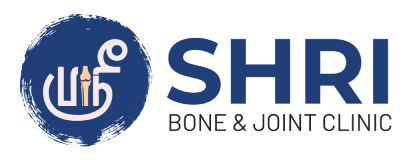
Lift your arms to grab something off a shelf and your shoulder stiffens grinds, and cracks. No part of that feeling makes you want to move your shoulder more. But that’s exactly what has to happen to help your shoulder function better and hurt less. There are many different forms of shoulder arthritis — from osteoarthritis to rheumatoid arthritis and others. No matter which type of shoulder arthritis you have, your doctor will recommend shoulder exercises as an important part of your shoulder arthritis treatment plan.
Here’s what’s happening in your shoulder when you have arthritis, and why exercising helps relieve pain and stiffness.
How Arthritis Affects Your Shoulders?
Your shoulder is made up of three bones: the upper arm bone, shoulder blade, and collarbone. The ends of those bones — where they meet in a joint — are covered with articular cartilage, a slippery substance that cushions and protects the bones as you move around.
Your shoulder has two separate joints: a bigger ball-and-socket called the glenohumeral joint, where the top of the upper arm bone is the “ball” that moves against a rounded “socket” in your shoulder blade. The other — called the acromioclavicular (AC) joint — is located where the collarbone meets the shoulder blade. Both can be affected by arthritis.
Different Types of Shoulder Arthritis:
Osteoarthritis
In OA, the cartilage in the shoulder joint gradually wears down, and the protective space between the bones decreases. Bone on bone rubbing and friction in the joint leads to pain, stiffness, and limited range of motion. Everyday tasks like combing your hair or carrying a bag become more challenging and painful. “Loss of range of motion in the shoulder can also lead to muscle spasms throughout the shoulder and the neck, which can cause headaches”.
Osteoarthritis usually affects people over 50 years of age and is more common in the AC joint than in the glenohumeral shoulder joint.
Rheumatoid arthritis
With RA, the immune system mistakenly attacks a protective lining in your joint called the synovium, and destroys cartilage. Though RA tends to affect smaller joints first (such as those in your hands and feet), symptoms can spread to both shoulders as the disease progresses.
Post-traumatic arthritis
A shoulder injury — like a fracture or dislocation — can damage the cartilage or cause additional wear, which can result in arthritis.
Rotator cuff tear arthropathy
The rotator cuff is comprised of tendons and muscles that wrap around the ball portion of your upper arm bone, keeping it centered in the shoulder socket. If one or more of these tendons is heavily torn, it may cause the head of the upper arm to rub against other bones, damaging the surfaces and leading to arthritis.
Avascular necrosis
This is when bone tissue dies due to a lack of blood supply. In the shoulder, blood flow may be disrupted to the head of the upper bone due to disease, injury, or other causes. Without blood supply, the bone will slowly collapse, becoming uneven and causing arthritis.
How Exercise Helps Shoulder Arthritis
Your shoulder is made to move; in fact, it has the most motion of any joint in the body. “What’s common to all types of shoulder arthritis is the potential of losing range of motion,”
And that is reason number one to exercise. The shoulder joint can get stiff and weak. If you keep it still, it stiffens more, she explains. Gentle stretching exercises can help maintain range of motion in your shoulder.
Strengthening exercises are important as well: “Keeping the muscles in and around the shoulder strong can give the joint more stability,”
Precautions Before Exercising with Shoulder Arthritis
If you’re new to exercise, it’s always smart to first talk to your doctor. Your doctor or physical therapist can make sure the exercises are safe and help you gain mobility and strength without exacerbating inflammation or aggravating joint pain. If you’ve had surgery on your shoulder, get guidance from your doctor or physical therapist on which shoulder exercises are safe for you. More tips to help protect your joints:
Start slowly
Ease your joints into exercise if you haven’t been active for a while, say experts. Push too hard too fast, and you can overwork your muscles and worsen joint pain. Go easy at first, then increase the length and intensity of your workout as you progress.
Move gently
Always warm up or stretch at the start of every exercise activity and do it again at the end. Don’t force any stretches. Don’t have someone else push on your shoulder to help you stretch more because that can set off a flare up. Instead, keep your movements slow and easy. Push to the point of feeling a good stretch without pain. With strength training, begin with fewer reps (or lower weight), and build up gradually.
Do a little every day
If you have a flare of RA or an increase in OA pain, you should still stay active. Some simple stretching may diminish some of the pain. Do short stretching sessions more often, instead of skipping a few days and then doing a longer workout: “Frequency is important is maintaining range of motion around the shoulder joint.”
Stop if your shoulder (or anything else) hurts
“Listen to the pain,”.
Take a break when your joint starts to ache. If you feel any new joint pain, it’s time to stop. Talk to your doctor about what pain is normal and when it’s a sign of something more serious.
- Exercises to Help Relieve Shoulder Arthritis Pain. The following shoulder exercises were recommended American academy of Orthopaedics surgeons (AAOS)
1. Shoulder Exercise: Pendulum
Stretches your outer shoulder and rotator cuff
- Stand next to a table or counter.
- Lean forward and place one hand on the table for support. Let your other arm hang freely at your side.
- Gently swing your arm forward and back 10 times.
- Gently swing your arm side to side 10 times. Gently swing your arm in a circle 10 times.
- Repeat with the other arm. Repeat the entire sequence one more time.
Tip: Don’t round your back or lock your knees.
2. Shoulder Exercise: Crossover Arm Stretch
Stretches the back of your shoulder
- Stand straight, with your shoulders relaxed.
- Gently pull one arm across your chest as far as comfortable, holding at your upper arm.
- Hold the stretch for 30 seconds, and then relax for 30 seconds. Repeat with the other arm.
- Repeat the sequence three more times.
Tip: Don’t pull or put pressure on your elbow.
3. Shoulder Exercise: Passive Internal Rotation
Stretches the front of your shoulder
- Get a lightweight stick, such as a yardstick, wooden dowel, or cane.
- Hold the stick behind your back with one hand, and lightly grasp the other end of the stick with your other hand.
- Pull the stick horizontally so that you feel a pull in the front of your shoulder without pain.
- Hold for 30 seconds, and then relax for 30 seconds. Repeat on the other side.
Repeat the sequence three more times.
Tip: Don’t lean over or twist to side while pulling the stick.
4. Shoulder Exercise: Passive External Rotation
Stretches the back of your shoulder
- Get a lightweight stick, such as a yardstick, wooden dowel, or cane.
- Grasp the stick with one hand and cup the other end of the stick with your other hand (so the stick is horizontal in front of you).
- Keep the elbow of the shoulder you are stretching against the side of your body and push the stick horizontally so you feel a pull at the back of your shoulder without pain.
- Hold for 30 seconds, and then relax for 30 seconds.
- Repeat on other side.
- Repeat the sequence three more times.
Tip: Keep your hips facing forward and do not twist.
5. Shoulder Exercise: Wall Crawl
Improves range of motion and strengthens shoulder muscles
- Stand in front of a wall, about an arms’ reach away, so your fingers can just touch it.
- Using your affected arm, slowly crawl your fingers up the wall as high you can comfortably go. (Keep your shoulder down, without shrugging up toward your ear.)
- Hold for 15 to 30 seconds; then crawl back down.
- Repeat one or two more times, trying to reach higher each time.
- Tip: If you feel a twinge of pain or your shoulder tightens as you crawl your fingers up, pause for a second and focus on relaxing the shoulder muscle,. You may be able to go a little higher once your shoulder is relaxed. If you feel a twinge again, you’ve reached your max range of motion.
6. Shoulder Exercise: Wall Push Up
Strengthens shoulder, arm, and chest muscles
- Stand in front of wall, with your arms straight and hands flat against it.
- Place your feet slightly wider than shoulder-width apart, and tighten your stomach muscles.
- Keeping your feet flat on the floor, bend your elbows and open your chest toward the wall.
- Lower your upper body toward the wall in a slow, controlled motion. Your shoulder blades will come together a bit in the back. Hold for one second.
- Keeping your hands flat against the wall, slowly push yourself back until your arms are straight.
- Repeat 8 times; and gradually build up to more reps.
- Tip: Make sure your fingers aren’t bent on the wall. Keeping them flat and pushing hard against the wall fully engages the muscles in your shoulder, arm, and chest.
Ref- https://creakyjoints.org/diet-exercise/exercises-arthritis-shoulder-pain (AAOS)






